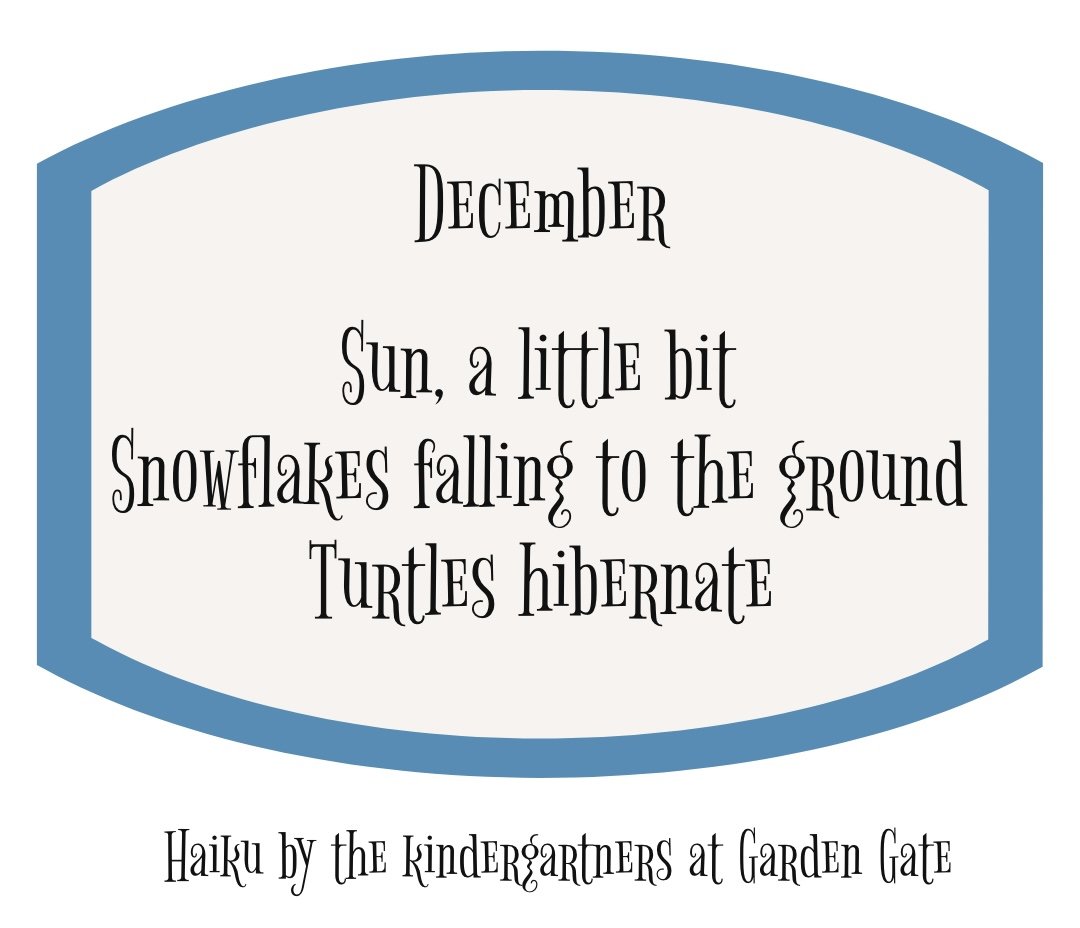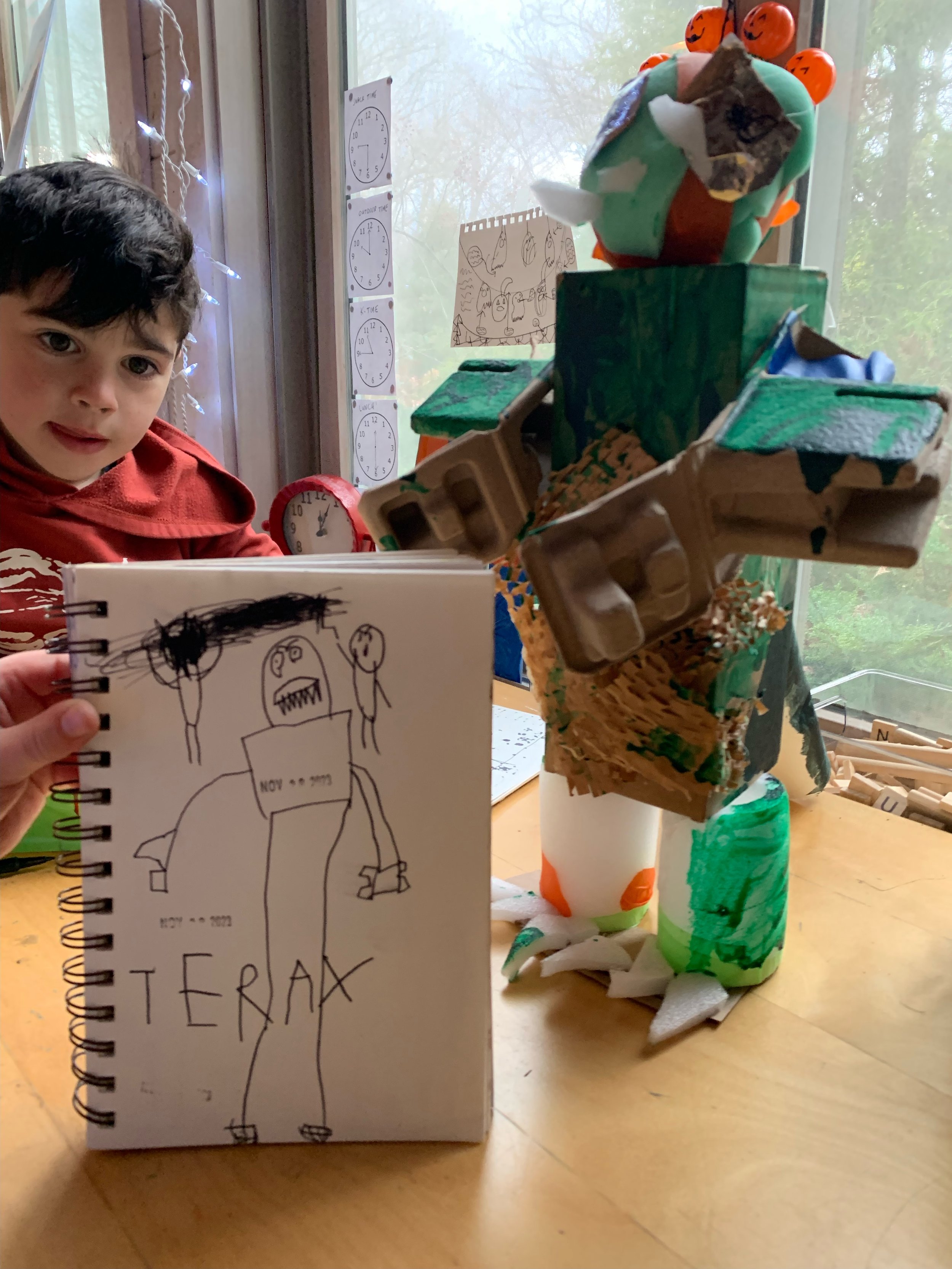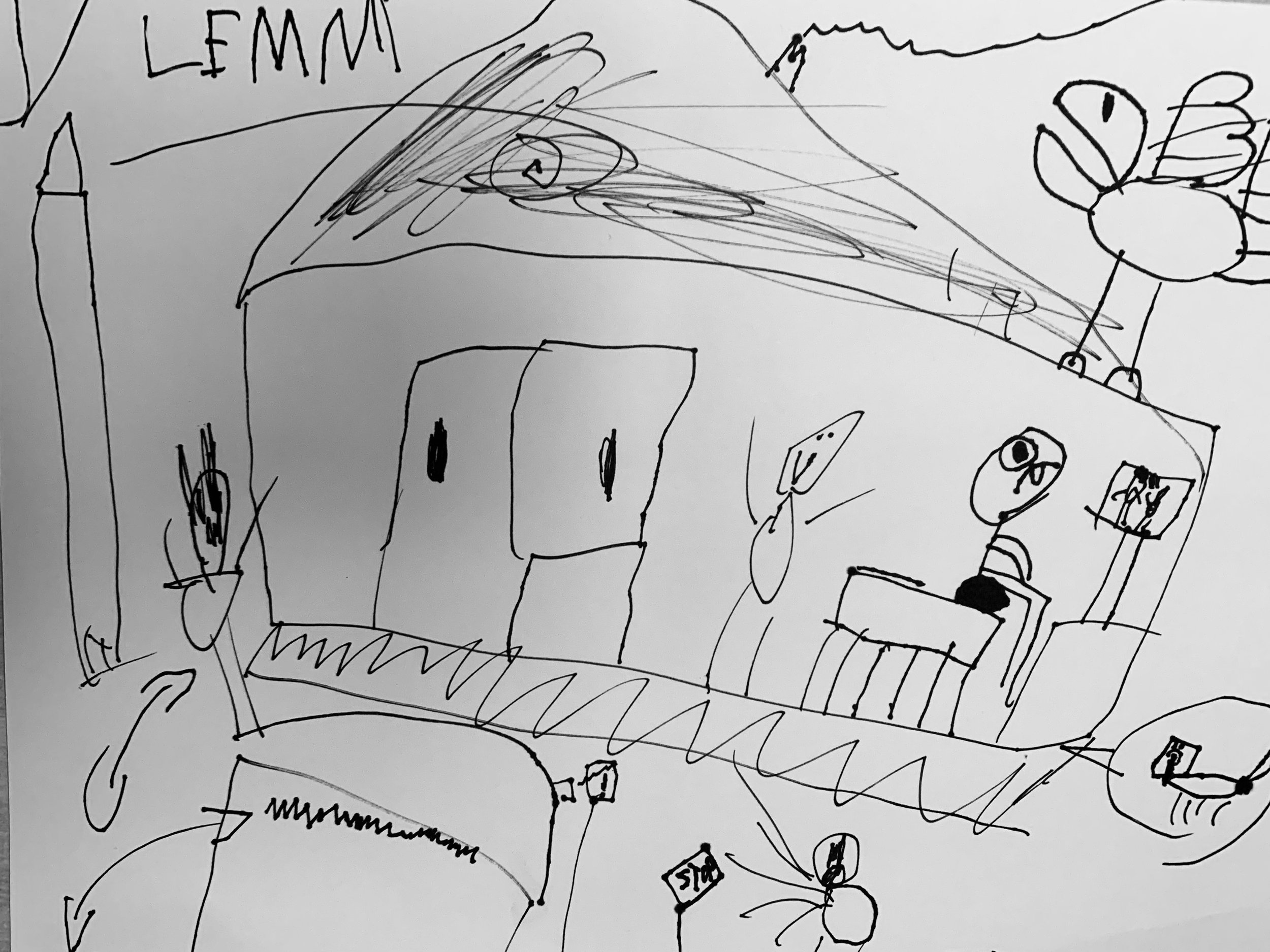DECEMBER 2023 NEWSLETTER
Importance of Creativity
According to pbs.com, creative experiences have many benefits for young children. “Creative experiences can help children express and cope with their feelings. A child's creative activity can help teachers to learn more about what the child may be thinking or feeling. Creativity also fosters mental growth in children by providing opportunities for trying out new ideas, and new ways of thinking and problem-solving. Creative activities help acknowledge and celebrate children's uniqueness and diversity as well as offer excellent opportunities to personalize our teaching and focus on each child.” At Garden Gate creativity is nurtured through the arts, the use of materials, in imaginative play and in creative problem solving. Engagement with the arts - whether it’s viewing works in the gallery, creating in our studio classrooms, engaging with children’s literature, participating in musical experiences or writing stories and poetry - inspires and supports creativity in deep and meaningful ways.
This year, our teachers have chosen, as our annual Topic of Intent, “Building Empathy and Understanding, Broadening Perspectives through the Use of Diverse Materials”. Embracing the “Hundred Languages of Children” allows each child to find their own voice and provides expressive media that allow children to share their ideas with each other. By focusing on materials, teachers are able to encourage creative thinking and problem solving, challenging existing ideas and helping children discover multiple ways of thinking.
In the Featherstone Art Barn
This is the last week for the Holiday Gift Show! Visit between 12-4 through Sunday December 17th to find locally made gifts! The gallery and the Featherstone office will be closed for the season until February 1st.
STUDIO ONE
In Studio One, our children are just beginning to explore some materials for the first time. Tape, scissors, glue, paint and clay all require an understanding of their attributes and the child’s relationship with them. Using recycled materials and a wide variety of tools for mark-making, cutting and attaching is helping our youngest children build artistic fluency. Creative construction and creative dramatic play are also enhanced by the addition of “loose parts” - recycled and up cycled materials as well as materials from nature. In Studio One the emphasis is on exploration, imagination and creative risk taking. Instead of asking your child “what did you make?” try asking “what were you thinking about?” This focuses the conversation on the experience, the process - instead of the outcome.
As always, we use a lot of children’s books to explore ideas, deepen thinking and inspire creativity. The children in Studio One continue to explore the topic of “houses”. After reading the fanciful book, If I Built A House, by Chris Van Dusen, the children imagined all sorts of things they’d add to their houses and some of the children re-created the water slide out of magnet tiles and bubble wrap. Also, the children in our group have been inspired by the book The Old Man, by Sarah and Claude Dubois to think about what they know in a new way and engage in some creative problem-solving. After reading this story about an old man who doesn’t have a house to live in, one of our three year olds observed, “Sometimes when people don’t have things and you do, you can give them something. Some people don’t have toys and we gave them some.” Another child offered, “We could get some sticks and build a fort. We can build it up all the way to the sun so everyone can live in it.” We have been inspired by our children’s innate sense of empathy and generosity to collect blankets for the homeless in our community this winter. Please drop off clean blankets in Studio One anytime before the holiday break!
Through the holidays we are discussing who lives in our house and broadening the topic to the importance of family and loved ones in our lives. The children have begun drawing or painting these people and their work is displayed on the wall next to the pictures of their houses.
STUDIO TWO
How many ways can we think about space? The answer is infinite.
Creativity has been exploding in our classroom as our space exploration continues.
The children have pondered the planets and gravity and meteorites and with each question they raise, they have come up with creative answers.
*Let’s read a book about the moon!
*Let’s make the surface of the moon out of flattened cardboard!
*Yes and then we need to paint it !
*We are having a slumber party in space!
*These silver balls (tin foil) are the rocket boosters - you can go to the moon in one second!
Creative use of a range of materials has included cardboard boxes, blocks, puzzles and lots and lots of loose parts. We even listened to “Walking on the Moon” by The Police and had a space dance party. We have read “Midnight on the Moon” (Magic Treehouse) by Mary Pope Osborne and “Jabari Tries” by Gaia Cornwall as well as tons of reference books about space. The children have also written and illustrated their own stories about space adventures.
Who knows what planet they will go to next…..
KINDERGARTEN
In the kindergarten room, we continue to explore materials - and individual creativity - through the ongoing project of inventions. Children are figuring out through this process what materials, and what means of expression through which they are most eloquent. Some choose sculpture, some choose pen, and pencil, and others, tape, and paper. As we continue this work creating helpful inventions through imagination, children become more competent in expressing their ideas and communicating their intelligences.
As the calendar year winds up and we continue our exploration of habitat, we turn our eyes toward home and family as we explore the environment and habitat of humans. What do humans need to survive? What do we need to thrive? What makes us different from bees, moles, and the animals we have been exploring? What needs and wants defines us as human? As we create models of human habitats, will explore this through a discussion of the work.
In this season of thoughtfulness and giving, we are also using HAIKU as a creative language to express our thoughts and ideas about the changing of the season. Children are also using drawing materials to create personalized stickers to send out on holiday cards and letters to those they love and miss throughout the year.
100 languages
NO WAY. THE HUNDRED IS THERE.
The child
is made of one hundred.
The child has
a hundred languages
a hundred hands
a hundred thoughts
a hundred ways of thinking
of playing, of speaking.
A hundred always a hundred
ways of listening
of marveling of loving
a hundred joys
for singing and understanding
a hundred worlds
to discover
a hundred worlds
to invent
a hundred worlds
to dream.
The child has
a hundred languages
(and a hundred hundred hundred more)
but they steal ninety-nine.
The school and the culture
separate the head from the body.
They tell the child:
to think without hands
to do without head
to listen and not to speak
to understand without joy
to love and to marvel
only at Easter and Christmas.
They tell the child:
to discover the world already there
and of the hundred
they steal ninety-nine.
They tell the child:
that work and play
reality and fantasy
science and imagination
sky and earth
reason and dream
are things
that do not belong together.
And thus they tell the child
that the hundred is not there.
The child says:
No way. The hundred is there.
by Loris Malaguzzi, founder of the Reggio Approach (translated by Lella Gandini)




































